Native flowering shrubs offer multiple advantages as boundaries over traditional fencing. You’ll create wildlife habitat while enjoying year-round visual interest through seasonal blooms, berries, and foliage. These living borders require less maintenance once established, prevent erosion with deep root systems, and resist local pests naturally. Unlike rigid fencing, native shrubs support pollinators, provide bird nesting sites, and enhance property aesthetics—all while clearly defining your outdoor spaces. Discover how these ecological alternatives transform simple property lines into vibrant ecosystem corridors.
Ecological Benefits of Native Flowering Shrubs as Boundaries
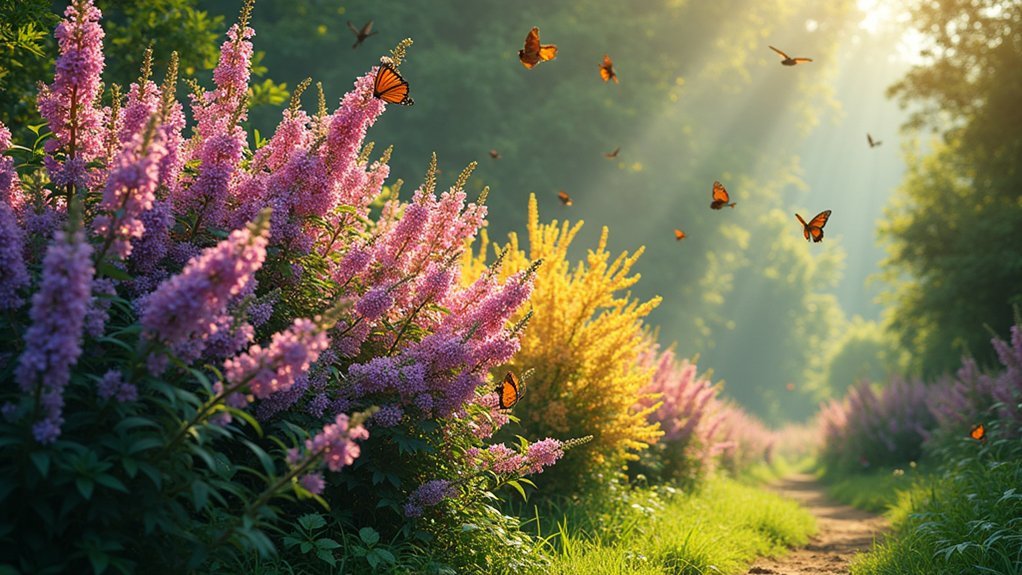
While many homeowners focus solely on aesthetic appeal when designing boundaries, native flowering shrubs offer far more than just visual charm.
When you plant these indigenous species, you’re creating essential habitats that support local wildlife ecosystems. Native shrubs provide food and shelter for birds, beneficial insects, and pollinators critical to your garden’s health.
They’ve evolved alongside local wildlife, forming relationships that non-native plants simply can’t replicate. You’ll notice increased biodiversity as these ecological benefits ripple through your landscape.
These shrubs also work as natural erosion control systems, with root networks that stabilize soil and improve water retention.
Unlike many exotic alternatives, native shrubs require fewer resources while offering greater resilience against regional pests and diseases—creating boundaries that contribute to, rather than detract from, your local ecosystem.
Top Native Flowering Shrubs for Creating Natural Property Lines
When selecting shrubs for natural boundaries, several standout native species offer both beauty and functionality for property lines. American beautyberry provides striking purple berries after its subtle blooms fade, creating visual interest throughout seasons.
Wild plum delivers fragrant spring flowers followed by edible fruits that attract birds and small mammals.
For reliable privacy, consider arrowwood viburnum with its dense foliage and white flower clusters that evolve into blue-black berries. Hazelnuts offer the dual benefits of wildlife food and attractive catkins.
These Native Plants establish themselves with minimal intervention once rooted, adapting to local soil and climate conditions.
You’ll find these native flowering shrubs create living fences that not only define your space but support pollinators and create habitat connectivity—all while requiring less maintenance than non-native alternatives.
Seasonal Interest: Year-Round Beauty With Native Boundary Plants
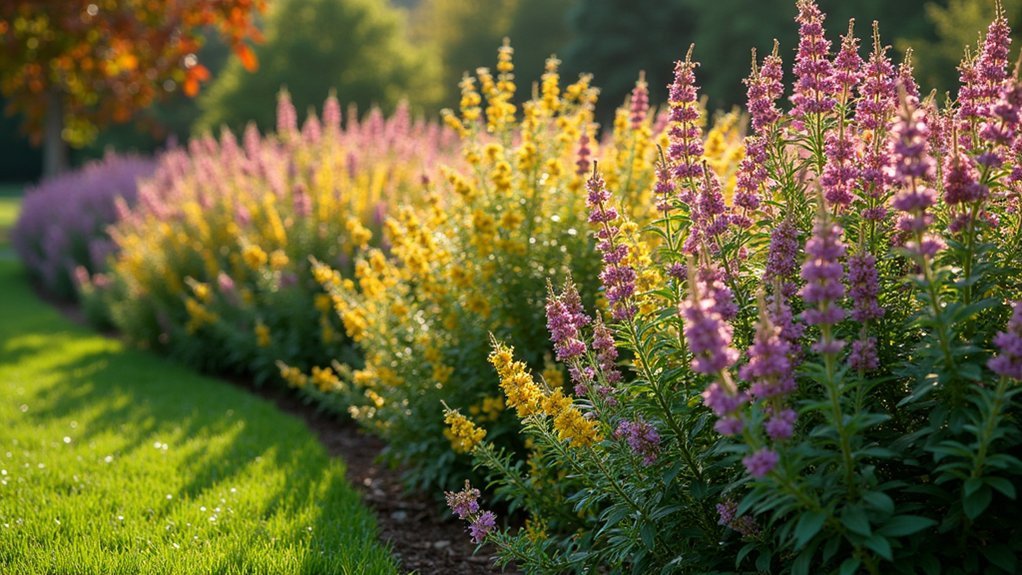
Native flowering shrubs transform ordinary property boundaries into dynamic living displays that evolve beautifully through all four seasons. When you plant serviceberry or viburnum along your borders, you’ll enjoy spring and summer blooms followed by colorful fruits that attract birds throughout the year.
Unlike static fencing, these native species provide continuous seasonal interest as they shift from vibrant spring flowers to lush summer foliage to brilliant autumn colors.
Plants like elderberry and butterfly bush offer extended blooming periods, ensuring your boundary remains alive with pollinators from early spring through late summer.
The varied growth habits of these shrubs—some upright, others spreading—create naturally layered boundaries that maintain visual appeal even in winter when their architectural forms stand against the snow.
Wildlife Support: How Native Shrub Boundaries Enhance Habitat
Native flowering shrubs transform your garden boundary into valuable wildlife real estate, creating safe nesting sanctuaries where birds can raise their young protected from predators.
You’ll enjoy watching your shrub border double as nature’s dining hall, with flowers serving as pollinator feeding stations that buzz with activity from spring through fall.
These shrub boundaries also provide essential refuge and food sources for migratory birds and butterflies needing rest stops during their seasonal journeys.
Bird Nesting Sanctuaries
Establishing natural sanctuaries for birds begins with thoughtful selection of flowering shrubs along your property boundaries. Native shrubs like arrowwood and wild raisin create ideal environments where bird populations can flourish, protected from predators and harsh weather.
When you plant these boundary shrubs, you’re creating layered habitats that support diverse nesting preferences:
- Dense foliage provides concealed nesting sites safe from predatory eyes.
- Varied branch heights accommodate different species’ preferred nesting elevations.
- Insect-rich environments guarantee readily available food for parent birds and hatchlings.
- Interconnected shrub corridors facilitate safe movement between territories for migrating birds.
You’ll notice increased biodiversity as these native shrub boundaries mature, transforming your property lines into vibrant ecological corridors that contribute to the overall resilience of local ecosystems.
Pollinator Feeding Stations
When you transform your property boundaries into flowering corridors with native shrubs, you’re creating crucial feeding stations for countless pollinators.
These native flowering shrubs offer a consistent supply of nectar and pollen throughout the growing season, ensuring bees, butterflies, and hummingbirds never go hungry.
Your boundary plantings establish crucial habitat corridors that allow pollinators to move freely, strengthening their populations and genetic diversity.
As an added bonus, the fruits produced by many of these shrubs feed birds and small mammals, enhancing the ecological web on your property.
Seasonal Migration Stopovers
Throughout the changing seasons, your boundary plantings serve as critical rest stops on the superhighways of bird and butterfly migration.
Native flowering shrubs provide essential resources that sustain wildlife during their seasonal migrations, creating safe havens where travelers can refuel and rest.
When you plant native shrubs along your property lines, you’re creating:
- Food hubs with berries and nectar that provide crucial energy for long-distance travelers
- Protective shelters where birds can hide from predators while recovering from flight
- Navigational landmarks that help species orient themselves along migration routes
- Year-round blooming schedules ensuring resources are available whenever migrants arrive
Establishing and Maintaining a Native Shrub Border
A successful native shrub border begins with understanding your local ecosystem. Select native flowering shrubs like arrowwood and wild raisin that match your site’s light, soil, and moisture conditions. These species will thrive with minimal maintenance once established while creating a vibrant boundary that supports wildlife.
When planting, consider each shrub’s mature size and space them accordingly. This foresight prevents overcrowding and creates a visually appealing border. After planting, you’ll only need occasional light pruning to maintain your desired height and shape.
Unlike exotic alternatives, your native shrub border won’t require synthetic fertilizers or pesticides. Instead, it’ll develop into a resilient ecosystem, offering year-round habitat for pollinators and birds.
Native plantings create self-sustaining sanctuaries that support local wildlife without chemical intervention.
Your boundary will serve both practical and ecological functions—defining space while enhancing biodiversity.
Design Principles for Effective Native Shrub Boundaries
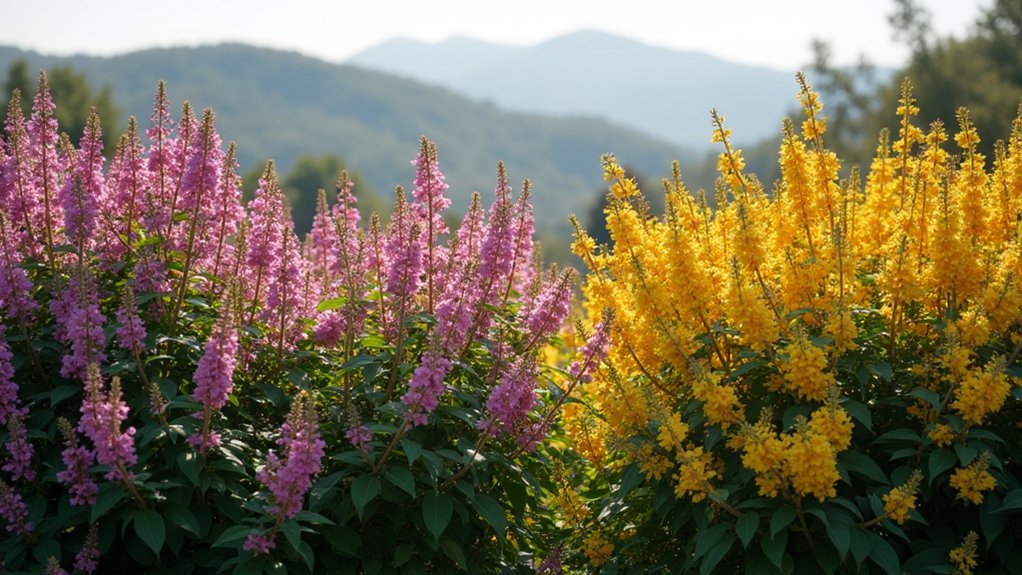
Crafting effective native shrub boundaries means you’ll want to layer plants of varying heights and textures to create visual depth and interest throughout the seasons.
Balance structured, architectural shrubs with those that offer softer movement, allowing your boundary to feel both organized and natural at once.
Use your flowering shrub selections to define outdoor spaces naturally, creating subtle shifts between different areas of your landscape while maintaining a cohesive overall design.
Layer For Visual Interest
When designing native shrub boundaries, layering emerges as a fundamental principle that transforms ordinary perimeters into visually striking landscapes.
You’ll create depth and dimension while supporting wildlife by strategically arranging different native flowering shrubs according to their natural growth habits.
Implement these layering techniques for maximum visual interest:
- Position tall specimens like arrowwood at the back to create a strong backbone structure.
- Place mid-height shrubs like wild raisin in the middle zone to build a shifting layer.
- Integrate low-growing varieties such as hazelnut along the front edge for accessibility.
- Incorporate plants with varied flowering times to guarantee continuous seasonal appeal.
This intentional layering not only creates beautiful boundaries but also reduces maintenance by minimizing opportunities for weeds while supporting ecological resilience in your landscape.
Balance Structure With Movement
Successful native shrub boundaries strike a delicate equilibrium between structured plantings and natural movement. When designing your border, aim to create definition while preserving the graceful flow that makes native landscapes so appealing.
Position taller native flowering shrubs strategically to frame key views rather than blocking them completely. This approach defines your space while maintaining essential sightlines and openness. The varied heights and forms create a layered effect that feels intentional yet natural.
Your boundary will evolve throughout the seasons as different species bloom in sequence, adding dynamic visual interest and attracting diverse pollinators. This seasonal progression keeps your landscape engaging year-round.
The flowing, natural aesthetic of native shrubs requires minimal maintenance once established, as these plants thrive in local conditions without excessive pruning or care.
Define Spaces Naturally
Unlike rigid fences or walls, native flowering shrubs create boundaries that seamlessly blend with the surrounding landscape while clearly defining distinct outdoor spaces.
These living borders offer both structure and flexibility, adapting to your design needs while supporting local ecosystems.
When designing with native plants, visualize how they’ll define your space:
- Layer different heights – tall shrubs in back, medium in middle, and lower plants in front for depth
- Create curved rather than straight lines to mimic natural growth patterns
- Plan for seasonal interest with varying bloom times among native selections
- Include openings or “gates” within the plantings for wildlife corridors
A well-designed shrub boundary requires at least 6 feet of width, though 15 feet provides ideal habitat benefits while clearly delineating your outdoor rooms.
Native Alternatives to Traditional Fencing Materials
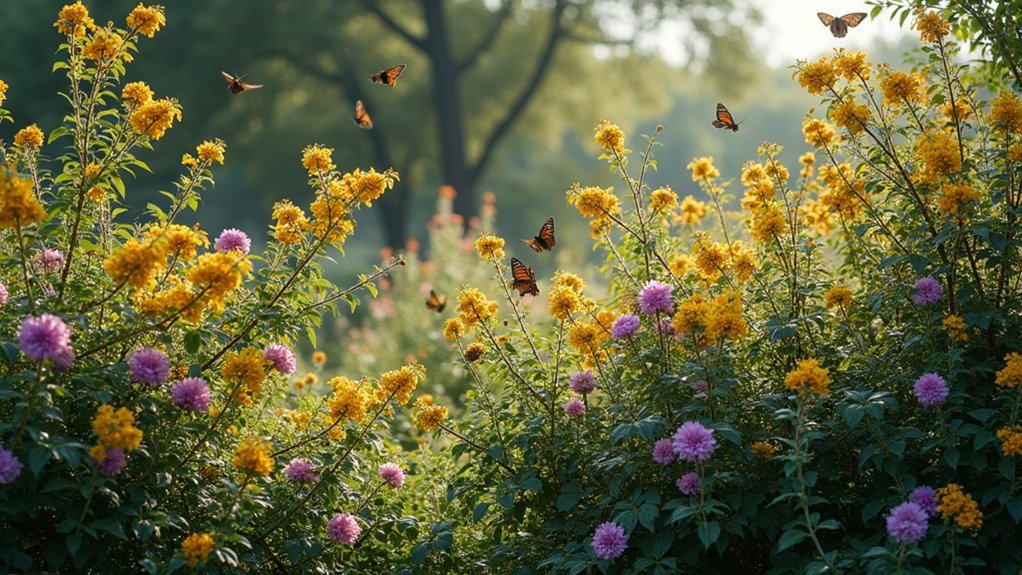
Though traditional fencing materials like wood, vinyl, and metal have long dominated property boundaries, native flowering shrubs offer a compelling ecological alternative. When you plant species like arrowwood and wild raisin, you’re creating living boundaries that serve multiple purposes beyond simple demarcation.
Unlike rigid fencing materials that require regular maintenance and offer little ecological value, native flowering shrubs enhance biodiversity by providing habitat and food for wildlife.
They’ll also establish deeper root systems that prevent erosion and improve soil health, while traditional materials can disrupt natural water flow patterns.
You’ll find that a mixed hedgerow of native flowering shrubs requires less upkeep and water once established, while delivering seasonal beauty with blooms that attract pollinators—benefits that static traditional fencing simply can’t provide.
Frequently Asked Questions
Why Should Native Plants Be Used in Landscaping?
You’ll save money with native plants as they need less water and maintenance. They’ll support local wildlife, prevent soil erosion, resist invasive species, and connect your landscape to the region’s natural heritage.
What Is the Best Bush to Block Neighbors?
Viburnum varieties like arrowwood or wild raisin are your best choices. They’ll create dense, tall barriers (5-10 feet) while attracting pollinators. You’ll enjoy privacy, beauty, and less maintenance with these native flowering shrubs.
Why Are Native Flowers Better?
Native flowers are better because they’ll thrive in your local climate, require less water and maintenance, support essential pollinators, and create habitat for wildlife. You’re preserving biodiversity while enjoying beautiful, resilient plants.
What Causes Landowners to Use Native Plants?
You’re choosing native plants because they thrive locally with less maintenance, support wildlife, boost biodiversity, save money long-term, and create beautiful seasonal displays that connect your property to the region’s natural heritage.
In Summary
By choosing native flowering shrubs for your boundaries, you’ll create living borders that benefit your landscape and local ecosystem simultaneously. They’ll provide beauty throughout seasons, support essential wildlife, require less maintenance once established, and offer greater sustainability than traditional fencing. Your property lines won’t just mark territory—they’ll become vibrant, ecological assets that connect your home to the natural community surrounding it.
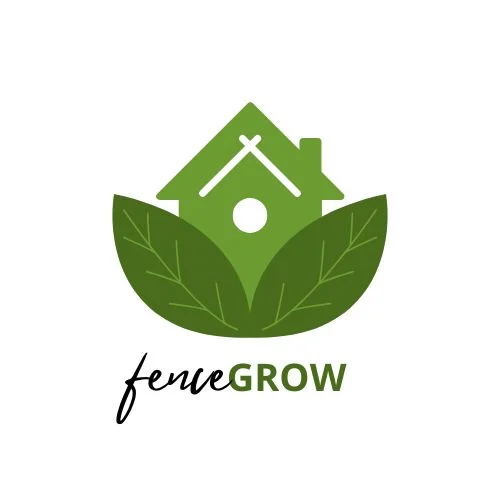


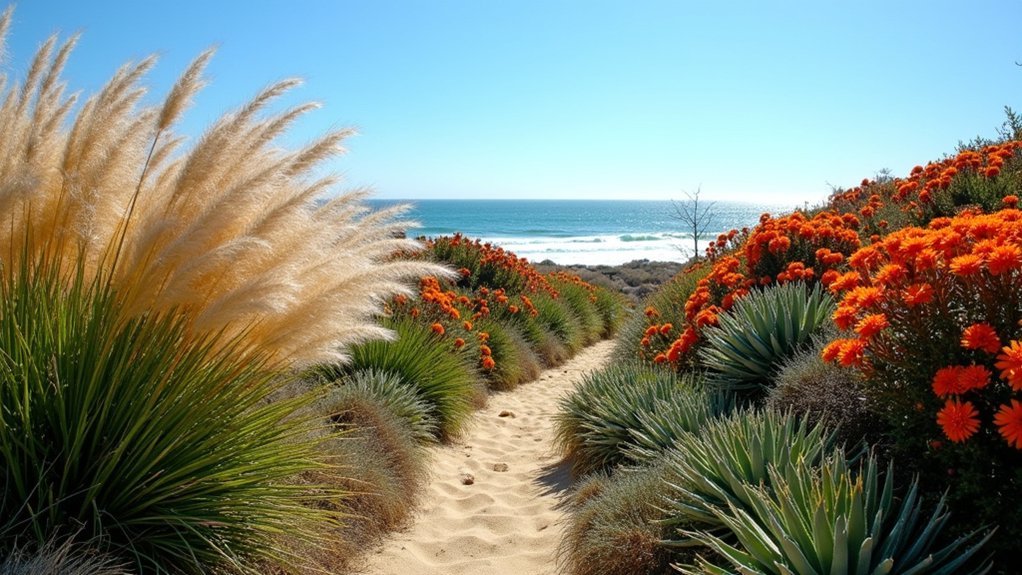
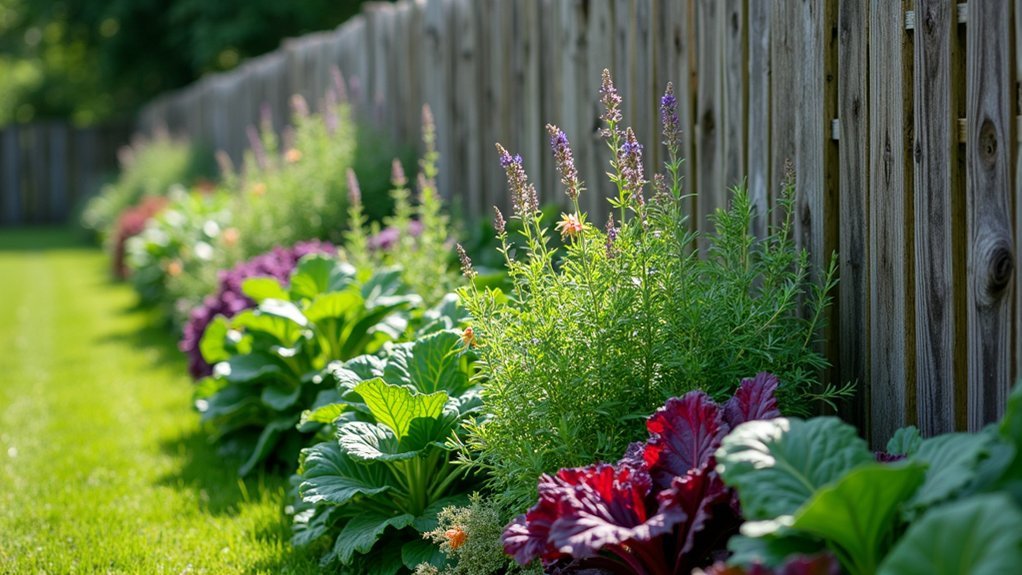
Leave a Reply